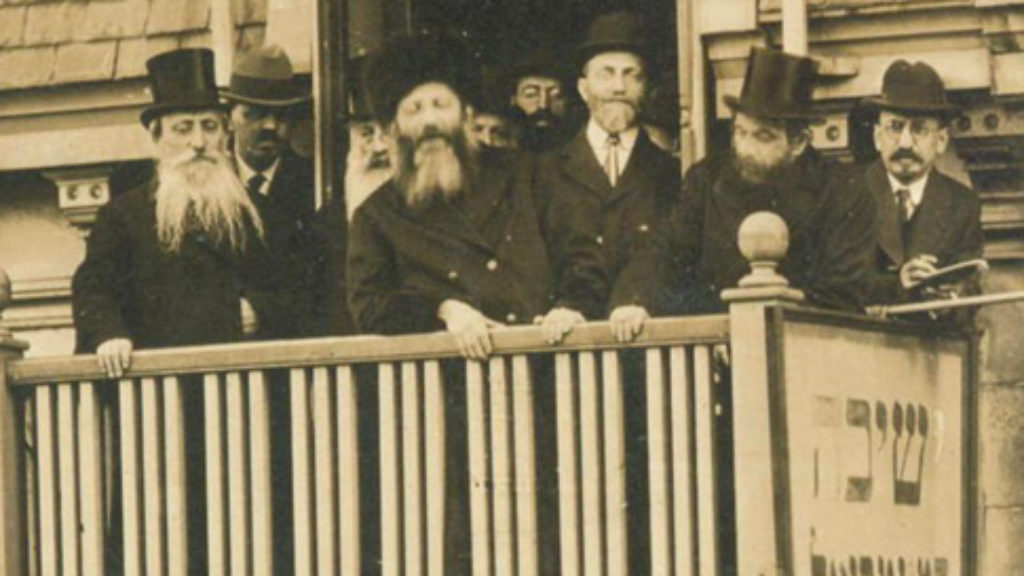The Medieval Blueprint: A Rejoinder
In his book, Alexander Kaye conspicuously avoids utilizing the term “halakhic state” to characterize any premodern regime, real or imaginary, and employs it only when he is describing proposals that have been put forth within the past century. Yet, as Kaye’s recourse in his response to my review to the work of Rabbi Aharon Lichtenstein illustrates, other scholars freely make mention of medieval Jewish thinkers who upheld the idea of a “halakhic state.” True, as Kaye observes, a thinker like Maimonides imagined a halakhic state in which the civil authority, i.e., the king, has the power to legislate beyond the halakha, and the courts can sometimes issue antihalakhic rulings. But this sovereign derives his authority from what Maimonides considered to be the biblical command to the Israelites to appoint a king, a ruler duty-bound to follow the path of the Torah and its commandments, when they entered the Land of Israel. To assist himself in following the proper path, he is obligated to transcribe his own Torah scroll, which he is to keep by his side when he sits in judgment. As the Israeli scholar Ella Belfer has written, “in the Mishneh Torah central emphasis is placed on the king’s spiritual task in the service of ‘the true religion.’” She goes on to observe that, in Maimonides’s eyes, the commandment to anoint a king is, therefore, “inseparable from the religious function of the kingdom.” Moreover, the king reigns over a polity in which state-supported courts have the power to punish Jews for religious transgressions—a power that Chief Rabbi Herzog, Kaye’s inventor of Jewish theocracy, thought they ideally ought to have in the State of Israel. This sounds to me like a halakhic blueprint for a theocratic monarchy.
I did not assume, as Kaye maintains, that he concentrates on Nissim of Gerona because he “better describes the kind of legal pluralism that . . . was the norm in premodern Jewish communities.” If I assumed anything, it was that he does so because he finds his views more congenial than the idea of a halakhic state. This would be quite understandable, for the Ran provides a somewhat serviceable springboard for Modern Orthodox Jews who, like Kaye, would much rather see the role of halakha in Israel’s public life constrained than expanded. Although I myself see things from a rather different angle, I share their preference. But I also think that those Orthodox thinkers who have the opposite preference have been able to find very solid support in traditional sources. The old Jewish pedigree of the theocratic idea of a halakhic state has to be acknowledged even if the concept underwent some unprecedented transformations—as Kaye shows—in the 20th century.
Allan Arkush’s original review of The Invention of Jewish Theocracy can be found here.
Alexander Kaye’s response can be found here.
Suggested Reading

Dialectical Spirit
A new intellectual biography explores the thought and legacy of Rabbi Abraham Isaac Kook.
State and Counterstate
Debates about Zion and its relation to the diaspora aren't new. David Myers and Noam Pianko have retrieved the forgotten ideas of several interesting figures, foremost among them Simon Rawidowicz. Do they speak to us now?
The Audacity of Faith
The career and life of Yehuda Amital—unconventional, unpredictable, and free of clichés.
A Normal Israel?
Zionism has long based its claim to sovereignty on the universal right to national self-determination, and the phrase “like all other nations” has been incorporated into Israel’s Declaration of Independence, yet the goal of “normalization” has proven to be much more complicated than most early Zionists had thought.
Comments
You must log in to comment Log In